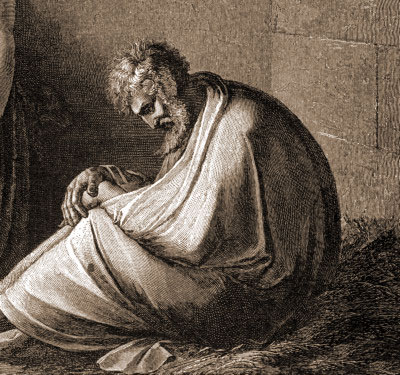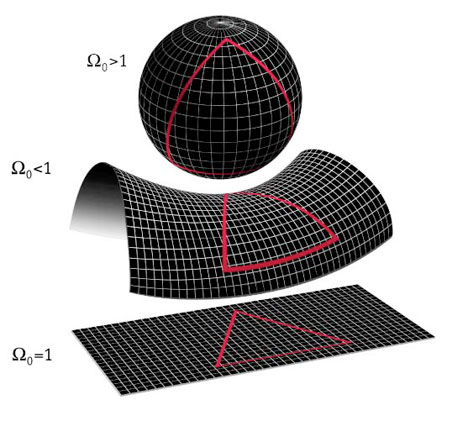Jun
13
2011

Someone made the comment that the “Bible Matrix” is something mystical. While it is certainly typological, it is not mystical. And it is only typological because it is the process of maturity God has built into everything under heaven. Trees and men grow up and bear fruit. That’s typology.
Continue reading
2 comments | tags: Amillennialism, Covenant Theology, James Jordan, Millennium, Postmillennialism, Revelation, Revelation 20, Satan, Typology | posted in Against Hyperpreterism, Bible Matrix, Biblical Theology, The Last Days
Jun
11
2011

You can find this over at Doug Wilson’s blog. I’m reposting it here because I’ve just spent over an hour responding to Doug R. and John B.’s good objections to comments on Shakin’ The Tree, so I’ve not got time to write anything new. Also, posting it here means I can find it more easily in future! So, at the risk of becoming the anti-paedobaptist/anti-hyperpreterist blog…
Baptism Points Away
Continue reading
22 comments | tags: Abraham, Baptism, Circumcision, Covenant Theology, Doug Wilson, Parenting, Tabernacle | posted in Against Hyperpreterism, Bible Matrix, Biblical Theology, Ethics, Quotes, Totus Christus
Jun
2
2011

Doug Wilson writes:
“The Levitical administration brought strong curses for disobedience (Heb. 2:2-3); the New Covenant administration brings much greater curses (Heb. 10:29; Heb. 12:25). Christians commonly assume that the really terrifying curses for disobedience were given in the Old Testament, and that under the New Testament all is grace. But this is precisely the opposite of the New Testament’s teaching on the subject” (To a Thousand Generations, pp. 28-29).
This is certainly a side of the New Covenant that Christians are never taught. The first time I ever heard of it was in David Chilton’s Revelation commentary The Days of Vengeance in 1989. But along with baptism (just had to throw that in), a rediscovery of the Old Covenant hammer makes everything in the New Covenant look like a nail. The Revelation is, after all, a book about the end of the Old Covenant.
Continue reading
Comments Off | tags: Baptism, Covenant curse, Covenant Theology, David Chilton, Deuteronomy, Doug Wilson, Hebrews, Josephus, Leviticus, Revelation 20 | posted in Against Hyperpreterism, Biblical Theology, The Last Days
May
30
2011

There is great advantage in tracking the shape of God’s work in history through the Old Testament. This is because God is consistent. Everything He does has the same shape, even though He does it in new and surprising (and sometimes devastating) ways.
One of the big handles in Scripture is the five-fold Covenant pattern, described by Ray Sutton in his book, “That You May Prosper: Dominion by Covenant.” Continue reading
Comments Off | tags: Against Hyperpreterism, Covenant Theology, Creation Week, Feasts, Moses, Ray Sutton, Revelation, Revelation 20 | posted in Against Hyperpreterism, Bible Matrix, Biblical Theology, The Last Days
Jan
25
2011

or Ulterior Motifs
Jesus’ reference to sun, moon and stars in Matthew 24 has nothing to do with the physical world, and everything to do with the microcosmic world of the Temple. Because of this, the Covenant Creationists think Genesis 1 is only about the Covenant with Adam, not about physical creation. They’re wrong, just as the literalists are wrong about Matthew 24 predicting the end of the world.
Continue reading
2 comments | tags: Baptism, Covenant Creationism, Creation Week, Dispensationalism, Genesis, Lampstand, Literary Structure, Matthew 24, Tabernacle, Table of Showbread | posted in Against Hyperpreterism, Bible Matrix, Biblical Theology, Creation, The Last Days
Jan
17
2011

or The Rapture is History
“And after my skin is destroyed, this I know, that in my flesh I shall see God.” Job 19:26
Full preterism leads logically to gnosticism. If death is already defeated, salvation has come to the world, and all is now perfect, then of necessity all three — death, salvation and perfection — have to be redefined. They are only Covenantal, “spiritual.” You can probably understand why doctrines like these don’t originate from the persecuted church. Some hope.
However, that said, I agree with 97.3963798475% of full preterism. Their take on the parousia texts is logical and contextual. Jesus actually did come back soon, as He promised, to rescue the persecuted firstfruits church. The textual ping-pong of the well-meaning partial preterists (who can’t agree between themselves on which parousia texts refer to the end of history) is a confusion of which our God could not possibly be the author. So what’s the answer?
Continue reading
28 comments | tags: Against Hyperpreterism, Covenant Theology, Daniel, David, Deuteronomy, Dispensationalism, Ezekiel, Ezra, Job, Leviticus, Paul, Resurrection, Saul, Tabernacle | posted in Against Hyperpreterism, Biblical Theology, The Last Days, The Restoration Era
Nov
4
2010

During the fourth year that Jehoiakim son of Josiah was king of Judah, the LORD said to me, “Jeremiah, since the time Josiah was king, I have been speaking to you about Israel, Judah, and the other nations. Now, get a scroll and write down everything I have told you, then read it to the people of Judah. Maybe they will stop sinning when they hear what terrible things I plan for them. And if they turn to me, I will forgive them”… (CEV) Jeremiah 36:1-3
God’s Covenants are always temporary. Every Covenant is a to and fro. It reflects the Word sent to the Son by the Spirit and the “bridal abundance” received in return by the Father. The Word is often pictured as a scroll, for obvious reasons. Scrolls were written and sealed with wax. The seal was temporary, something to protect the confidentiality of the contents, but something to be broken once the document reached its intended destination. The Bible Matrix makes plain the symbols used by God to illustrate this step in the Covenantal order of all He has made. Continue reading
1 comment | tags: Acts, Ascension, Creation Week, Daniel, Jeremiah, John, Moses, Revelation, Trinity | posted in Against Hyperpreterism, Bible Matrix, Biblical Theology, The Last Days, The Restoration Era
Sep
29
2010

“What was from the beginning, what we have heard, what we have seen with our eyes, what we have gazed upon and our hands handled concerning the word of life—and the life was manifested, and we have seen and bear witness and announce to you the life, the eternal one, which was toward the Father and was manifested to us—what we have seen and heard, we announce also to you…”
IF I BELIEVE that the first resurrection occurred around AD70 [1], and that the New Covenant administration consists of saints living and reigning with Christ in heaven [2], these “joint-heirs” become co-mediators in some fashion. Does this open the door to the Roman Catholic practice of praying to glorified saints, or to the Eastern Orthodox love for beautiful icons?
Continue reading
8 comments | tags: AD70, Holy Place, John, Millennium, Peter Leithart, Revelation 20, Roman Catholicism | posted in Against Hyperpreterism, Biblical Theology, Quotes, The Last Days
Sep
28
2010
or The Universe is Flat
 The three density ratios (Ω omega) and the corresponding cosmological morphology. (Goddard Space Flight Center WMAP Cosmology)
The three density ratios (Ω omega) and the corresponding cosmological morphology. (Goddard Space Flight Center WMAP Cosmology)
Therefore, brethren, having boldness to enter the Holiest by the blood of Jesus, by a new and living way which He consecrated for us, through the veil, that is, His flesh, and having a High Priest over the house of God, let us draw near with a true heart in full assurance of faith, having our hearts sprinkled from an evil conscience and our bodies washed with pure water. (Hebrews 10:19-22)
The “firmament” is the most troublesome element of the Creation week. Even when we understand its symbolic counterpart in the Tabernacle (the veil), how do we account for its description as a physical part of the world?
On Day 4, God created the governing lights and put them in the firmament. If this refers to some sort of “water canopy” that later came crashing down in the Great Flood, the language referring to it as a home for stars is then visual. The Adam-to-Noah pattern puts the floodgates of heaven at “Atonement,” which means the opening of this original “proto-veil” brought men face-to-face with the Ark/throne of God and washed away the sin of the world, quite literally. All flesh was cut off. All sin was covered. And it was the end of that Covenant. The sky was rolled up like a scroll. In Noah, God founded a new heavens and a new (mediatory) Altar-Land. Symbolically, the old sun, moon and stars came crashing down. They were the “mighty men” of Genesis 6. Symbolically, God put new rulers in the firmament: a body of men and animals in a covered vessel.
But, of course, the actual governing lights remained. So, there remains something beyond this original watery “sea.” The word translated “firmament” means something flat, beaten out like metal. It is architectural. Cosmologists now tell us that the universe may well be both spherical, hyperbolic and/or “flat,” a bit like the surface of the earth, I guess. [1] God speaks of the mediatory Land as flat because it is an Altar. [2] Space is a veil between men and the throne of God. Filled with lights, it pictures for us the Holy Place before God’s throne, which is populated with angels and the redeemed. This cosmic hall of government resembled a crystal sea.
But there is something strange about the account of the creation of this veil, this dark garment stretched out on Day 2. Like the “waters above” of the original Covenant, space itself has a built-in obsolescence.
Continue reading
6 comments | tags: Abraham, Creation Week, Genesis, Pentecost, The flood | posted in Against Hyperpreterism, Bible Matrix, Biblical Theology, Creation, The Restoration Era



































